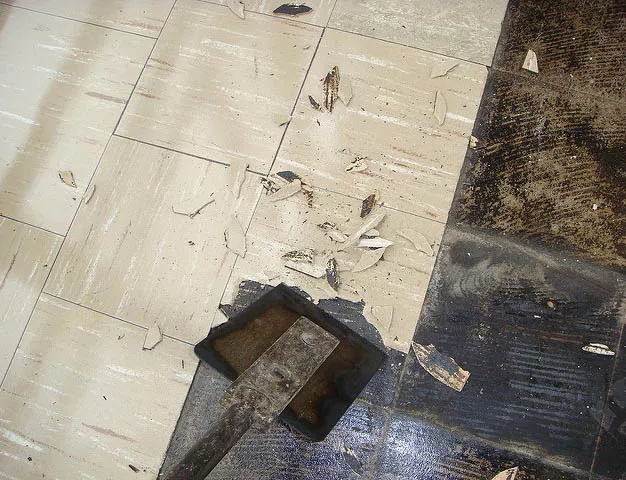 Source: Asbestos.com
Source: Asbestos.com
When it came to vinyl tiles and linoleum floor tiles, asbestos was the building material of choice for decades. Until the late 1980s, builders had used asbestos as masting and other ingredients to provide affordable and fireproof tiles and sheeting.
However, because of asbestos’ history of causing lung cancer and other fatal illnesses, it fell out of favour in the construction industry. While you won’t find new sheet flooring products containing asbestos, the risk of exposure to asbestos fibers is still real in older buildings.
In this piece, we’ll take a look at how you can find, manage, and remove asbestos in flooring, linoleum, and vinyl included.
How to Find & Remove Asbestos Linoleum Flooring
Vinyl & Linoleum Flooring: Asbestos Masting is the Problem
As with any asbestos-containing material (ACM), the first step to finding asbestos in linoleum sheet flooring and vinyl tiles is to check your Designated Substance Survey (DSS).
The DSS should specify what parts of your buildings use asbestos. You’ll also look into the condition of each ACM in terms of damage. It’ll help you know if any of your linoleum or vinyl sheets need repair or replacing.
When it comes to linoleum or vinyl flooring, the main problem is the masting. In the 1950s, most builders had used asbestos as masting to hold the tiles together and to the ground. Linoleum, in particular, might also have paper backing made out of asbestos.
You can also check out the specific design of your tiles. Before the mid-1980s, for example, a lot of buildings used 9×9” square tiles. In general, those tiles contain asbestos adhesives, which will usually make those tiles presumed asbestos containing materials (PACM).
The Toughest Job is Removing Tiles Containing Asbestos
Take Them Out Without Putting Your Occupants at Risk
Vinyl & Linoleum Sheet Flooring: Asbestos Management Options
In general, when it comes to asbestos materials, as long as the asbestos is sealed away and in a non-friable state (i.e., where you can’t crush it into dust), it’s not harmful.
It’s only a problem when there’s asbestos exposure. The risk with damaged or worn tiles is that there may be cracks through which asbestos fibers can move. If you have friable asbestos, then your occupants are at high risk of breathing in the asbestos.
You can potentially prevent this from happening by properly maintaining your tiles so that they don’t wear out and break. But in some buildings, such as industrial ones, that’s not realistic — heavy machinery or vehicles could damage your flooring material.
Likewise, the Ontario Occupational Health and Safety Act (OHSA) requires you to continually document asbestos materials, warn occupants of its presence, and clean-up broken tiles. At a certain point, this becomes an expensive process, and with few returns in terms of profit.
In these situations, your best bet would be asbestos removal (abatement).
The challenge with old linoleum flooring, asbestos masting, and the like is that it usually takes up a large portion of your building’s surface area. You could easily have over 100 square feet
of asbestos, which automatically sets you up for a Type 3 asbestos abatement project.
You also have the challenge of removing the masting. It’s relatively easy to remove the tile, but if the masting or adhesive has asbestos, then the process of removing is much harder. Also, if you are not careful with the removal procedures, you could get exposed to asbestos fibers.
Need More Information on How to Remove Asbestos From Your Building?
- What are the Types of Asbestos Removal?
- How to Manage Asbestos in Buildings
- When is Asbestos Testing Required?
- Understanding Asbestos Removal Legislation & Regulation
- How to Remove Asbestos Pipe Insulation
One way to manage asbestos exposure risks is to call a professional asbestos abatement company. They’ll take steps to prevent asbestos exposure while also remove the material from your building as safely and quickly as possible.
It’s not easy removing tiles containing asbestos. FERRO will remove it safely and quickly without putting your tenants at risk of exposure. Call us today to get started.

